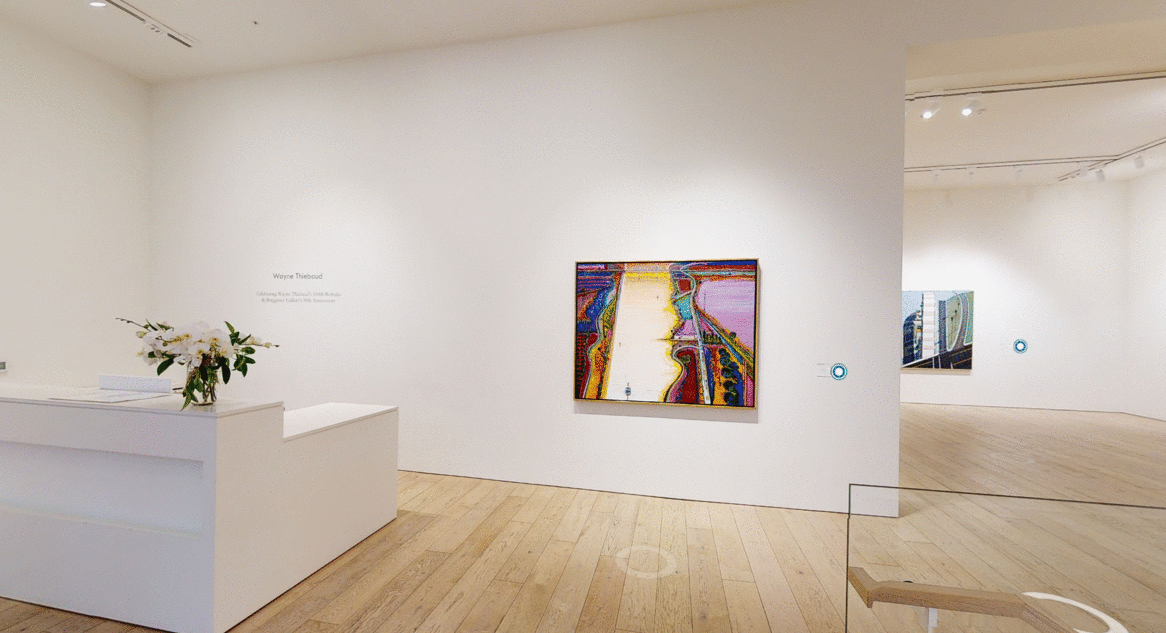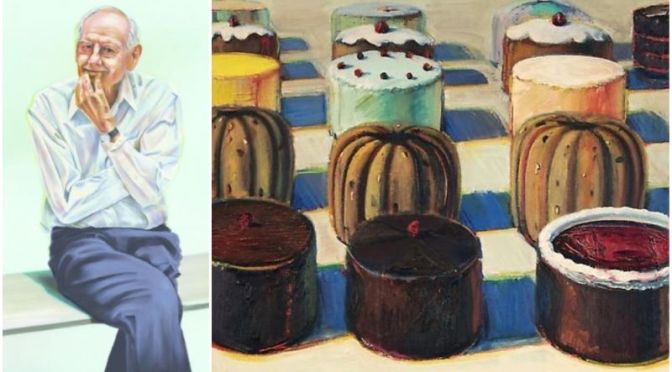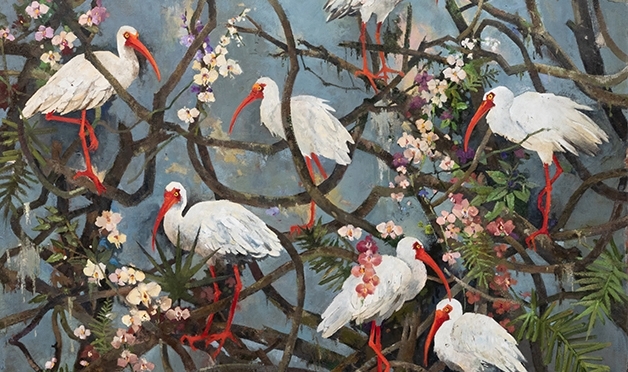A monumental survey, Wayne Thiebaud features over fifty paintings, works on paper, and limited-edition prints—many of which are rarely exhibited works from private collections and museums. Among the early works in the exhibition is the iconic Three Machines (1963)—courtesy of the Fine Arts Museums of San Francisco—a dynamic painting of three gumball machines filled with colorful candy orbs in which “tangible reality and abstraction intermix as one.”

Click Here to Launch 3D Online Exhibition
Berggruen Gallery is honored to present Wayne Thiebaud, an exhibition of paintings, works on paper, and prints from 1961 to present by one of the preeminent living American artists, Wayne Thiebaud. This show marks the gallery’s seventh solo exhibition of Thiebaud’s work since his first show with John Berggruen Gallery in 1973. The gallery is especially proud to hold this exhibition in honor of two very special occasions: Wayne Thiebaud’s 100th birthday and Berggruen Gallery’s 50th anniversary. Wayne Thiebaud will be on view October 16 through November 28, 2020.
Spanning six decades, Wayne Thiebaud highlights the artist’s most quintessential, significant, and compelling work from the near entirety of his career. Thiebaud is most often recognized for his delectable still life paintings of confections, from slices of pie arranged in rows to bakery cases filled with intricately decorated cakes to dishes of colorful lollipops and candies. With paint as thick as frosting, Thiebaud’s illustrative depictions emphasize his subject matter’s physicality. Ornately decorated, densely outlined, and starkly shadowed, Thiebaud’s treats sit for the viewer masterfully rendered and enticing. Though the artist rose to prominence for such paintings, Thiebaud is now renowned for a vast breadth of subject matter—steep and winding cityscapes, saturated expanses of the Sacramento Valley, and attentive portraiture of friends or everyday figures. Art critics have connected his work to a breadth of art movements, analogizing his figurative work to that of esteemed American painter Edward Hopper and his aptitude for still life painting to that of 18th century French artist Jean-Baptiste-Siméon Chardin. Yet overall, Thiebaud’s prolific career defies singular movements and art historical references. Altogether, he simply reflects something authentically, emotionally, and uniquely American.CNiMdewz



 Berggruen Gallery is proud to present John Alexander: Landscape and Memory, an exhibition of recent paintings and drawings by Texas-born, New York-based artist John Alexander. This show marks Alexander’s second solo exhibition with the gallery and will be on view January 9 through February 15, 2020. The gallery will host an opening reception for the artist on Thursday, January 16 from 5:00 to 7:00pm.
Berggruen Gallery is proud to present John Alexander: Landscape and Memory, an exhibition of recent paintings and drawings by Texas-born, New York-based artist John Alexander. This show marks Alexander’s second solo exhibition with the gallery and will be on view January 9 through February 15, 2020. The gallery will host an opening reception for the artist on Thursday, January 16 from 5:00 to 7:00pm. The introspective nature of Alexander’s work is revealed through the artist’s keen observations of his surrounding environment and the vivid way in which he paints it. Employing bold, painterly strokes, Alexander maintains an acute sensibility of his subject matter – whether it be the detailed rendering of the spiny lobster, an expressive portrayal of grackles and ibises perched in branches, or more expansive, floating florals. The artist also injects elements of whimsy; the playful monkeys he paints peer out of their canvases to almost directly engage the viewer. And thus each work is imbued with an authentic, raggedly pristine, emotional sense of the earth we all inhabit. In this way, Alexander creates scenes that are deeply personal, yet also shared…nostalgic yet ongoing…exotic yet familiar…of the world yet otherworldly. Saturating his landscapes with humor, sentimentality, and veneration, Alexander reveals as much about himself as he does about nature.
The introspective nature of Alexander’s work is revealed through the artist’s keen observations of his surrounding environment and the vivid way in which he paints it. Employing bold, painterly strokes, Alexander maintains an acute sensibility of his subject matter – whether it be the detailed rendering of the spiny lobster, an expressive portrayal of grackles and ibises perched in branches, or more expansive, floating florals. The artist also injects elements of whimsy; the playful monkeys he paints peer out of their canvases to almost directly engage the viewer. And thus each work is imbued with an authentic, raggedly pristine, emotional sense of the earth we all inhabit. In this way, Alexander creates scenes that are deeply personal, yet also shared…nostalgic yet ongoing…exotic yet familiar…of the world yet otherworldly. Saturating his landscapes with humor, sentimentality, and veneration, Alexander reveals as much about himself as he does about nature.